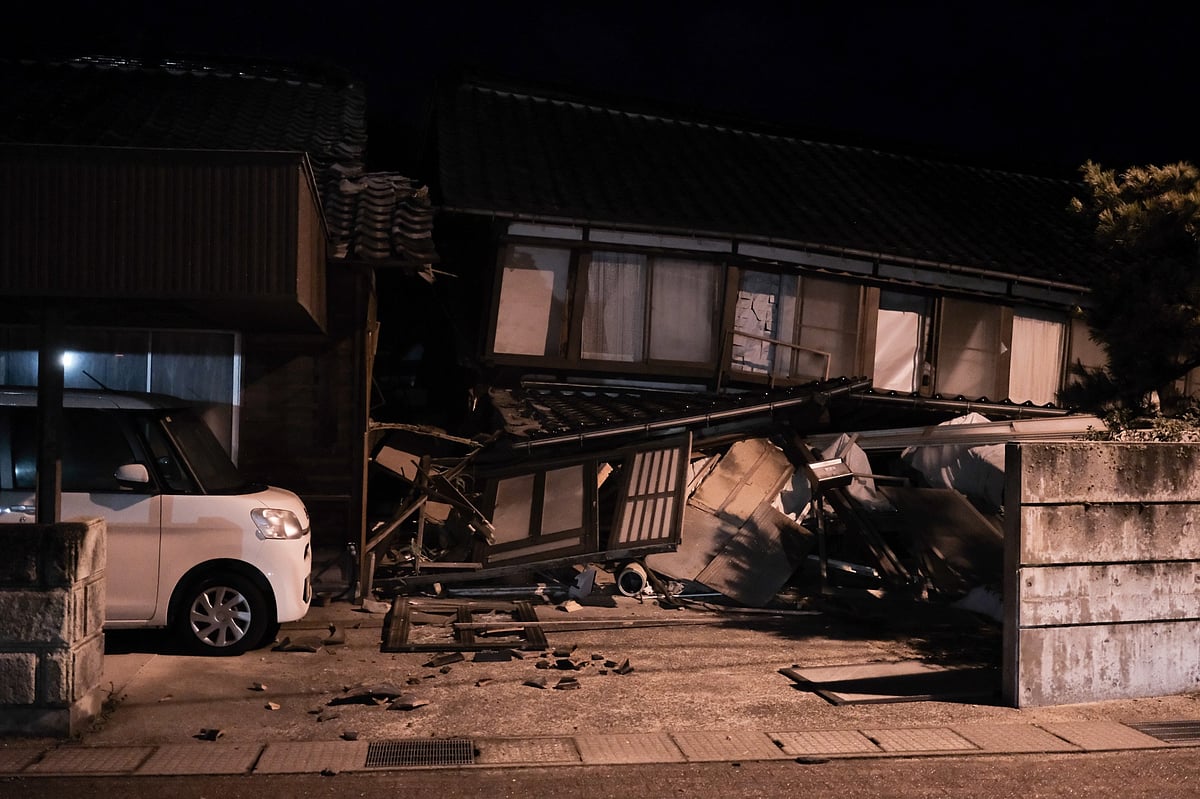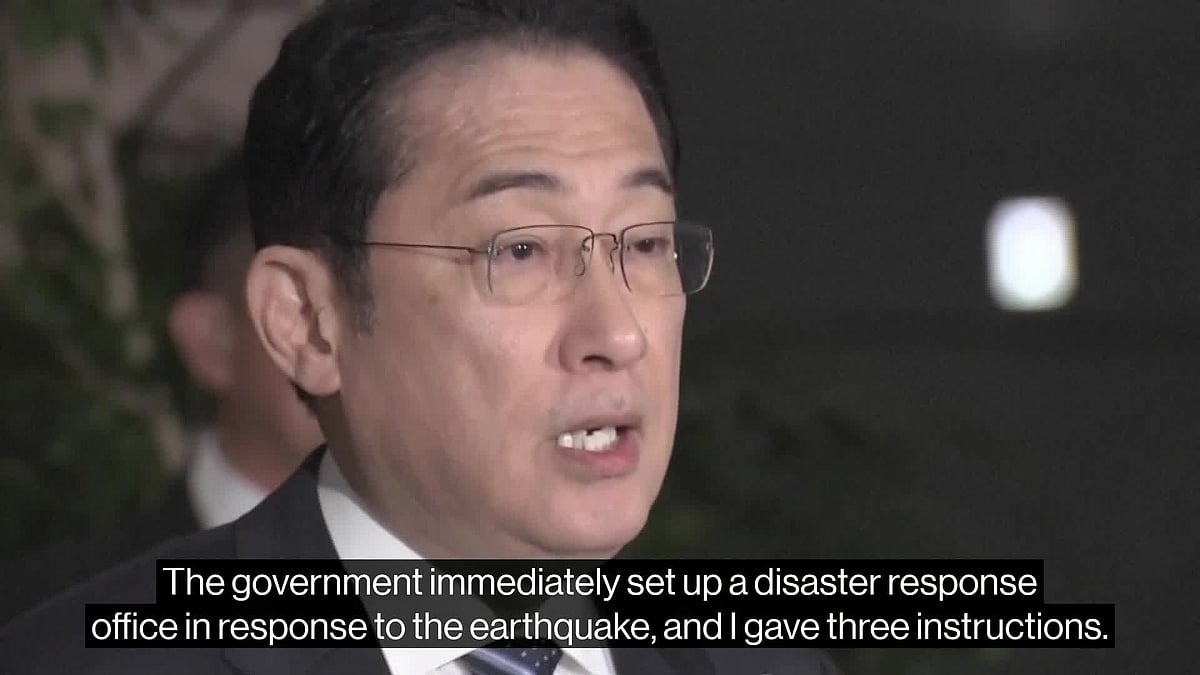Quake Hits Northwestern Japan, Killing Four, Wrecking Homes
Japan issued a tsunami warning for its almost all of its western coast after a powerful earthquake with a magnitude 7.6 hit off the Noto Peninsula about 300 km (190 miles) from Tokyo on Monday.

(Bloomberg) -- A powerful earthquake hit off the Noto Peninsula on Japan’s northwest coast, followed by more than 50 aftershocks, killing at least four people and triggering a widespread tsunami warning.
A major fire broke out in the city of Wajima and appeared to spread across several buildings, video on broadcaster NTV showed after the magnitude-7.6 temblor. The city was hit by a tsunami of at least 1.2 meters (4 feet), the largest reported by NHK. Six cases of buildings collapsing with people trapped inside have been reported following Monday’s tremors, Japan’s Chief Cabinet Secretary Yoshimasa Hayashi told a press conference.

Four deaths have been confirmed as of 1:30 a.m. local time on Tuesday, according to the Ishikawa prefectural government.

Japan issued a tsunami warning for almost all of its western coast after the quake hit, and areas as far north as Hokkaido recorded tsunami. Residents were urged to evacuate to higher ground away from the coast, and to remain there until the warning is lifted.
Some train services were suspended and power plants halted operations, while several roads and an airport runway were closed due to the damage. Authorities checked on nuclear reactors. Mobile phone services were also affected due to the quake.

Seven people were injured across several towns in Ishikawa prefecture, according to broadcaster TBS. Video footage on broadcaster ANN showed collapsed houses in Wajima, about 300 kilometers (190 miles) northwest of Tokyo and posts on social media showed shops filled with broken bottles and other items that had fallen from shelves.
A further tsunami as high as 1 meter could still hit, according to the Japan Meteorological Agency. The tsunami warning stretched from Japan’s main northern island of Hokkaido to the main southwestern island of Kyushu. South Korea also recorded small tsunami in some areas, the Korea Times reported.
The Japan Meteorological Agency warned that residents should be on the alert for potentially large aftershocks over the next week.
The earthquake impacted several power plants in the region. Hokuriku Electric Power Co.’s Nanao Ohta power plant’s coal-fired units were halted due to the quake, leading to a loss of about 1.2 gigawatts of capacity, according to Japan Electric Power Exchange’s website. Jera Co. also halted a gas-fired unit at its Joetsu power station for inspection and plans to restart it tomorrow, according to JEPX website.
About 32,600 households were without power as of 8:15 p.m., according to Hokuriku Electric. Temperatures in the area are set to be near freezing overnight, with many families gathering together for the New Year holiday.
Japan’s Nuclear Regulation Authority said in an emailed statement there have been no abnormalities found at the nuclear power plants in the region, including Hokuriku Electric’s Shika nuclear power plant and Tokyo Electric Power Co.’s Kashiwazaki Kariwa nuclear power plant.

Japan is one of the world’s most earthquake-prone countries and in 2011 was hit by a magnitude 9 tremor that triggered a massive tsunami, killing nearly 20,000 and wrecking the Fukushima Dai-Ichi nuclear plant.
--With assistance from Nicholas Takahashi and Kyung Bok Cho.
(Updates with number of deaths.)
More stories like this are available on bloomberg.com
©2024 Bloomberg L.P.